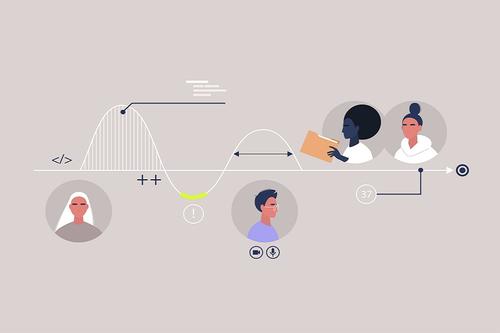New prevalence data on sex trading shows disproportional impact on transgender and gender diverse high school students

Published in the American Journal of Public Health, University of Minnesota researchers found transgender and gender diverse students self-reported trading sex at a rate five times higher than cisgender students. Compared to their peers, mental health concerns were highest among transgender and gender diverse students who traded sex, with over 75% reporting ever attempting suicide. Transgender and gender diverse students who traded sex tended to be youth of color, identify as LGBQ+ and experience unstable housing.
The research team, made up of faculty and staff from the U of M Medical School, School of Nursing and School of Social Work analyzed data from approximately 68,000 high schoolers who completed the Minnesota Student Survey. In 2019, the survey for Grades 9 and 11 asked, “have you ever traded sex or sexual activity to receive money, food, drugs, alcohol, a place to stay, or anything else?” This behavior-based question does not provide specific information about the experiences of young people related to sex trading, which can include, but is not limited to, instances of survival sex, exploitation, violence and trafficking.
“Sex trading is highly stigmatized, and there are many myths and misconceptions that need to be challenged and discredited. Systemic oppressions are driving forces of these alarming study results. We also need to acknowledge that there is a story of resilience here for transgender and gender diverse youth who trade sex,” said lead author Nic Rider, PhD, coordinator of the transgender health services program at the U of M Medical School Institute for Sexual and Gender Health.
Key findings from the research study were that:
- 5.9% of transgender and gender diverse students reported trading sex; five times higher than cisgender peers at 1.2%.
- Startling differences in suicide attempts based on gender and sex trading were found.
- The rate of ever attempting suicide was 75.9% for transgender and gender diverse students who traded sex, compared to 30.1% who did not trade sex.
- Among cisgender students, 45.9% who traded sex reported attempting suicide at some point in their lives compared to 7.2% who did not trade sex.
Transgender and gender diverse students who trade sex are far more likely to report mental health challenges such as suicide attempts, non-suicidal self-injury, anxiety and depression compared to their cisgender classmates who did not report trading sex. Data suggest the disproportionate mental health impacts should be situated in the context of other harms, including harassment and discrimination experienced by transgender and gender diverse students.
“The Minnesota Student Survey provides critical new data for establishing the prevalence of sex trading among high school students and to identify those youth who are disproportionally impacted. We need this data to make decisions about resource allocation,” according to senior author Lauren Martin, PhD, an associate professor at the School of Nursing.
Youth who trade sex are connected to schools and have hopes for the future. Approximately two-thirds of students who traded sex, regardless of gender, reported that a school adult helped them think about educational and career options after high school, which has been noted as an important protective factor with respect to ending sex trading among youth. This data presents a compelling case for comprehensive training of adults in school and clinical contexts, such as mental health and sexual health providers, who can support students who trade sex and be sources of safety.
“If we want to reduce the number of youth who are sexually exploited, we must provide students with resources to navigate difficult situations and build healthy relationships,” states Minnesota Department of Health (MDH) Violence Prevention Programs Unit Supervisor, Beatriz Menanteau, JD. “MDH, through its Safe Harbor Program, is committed to using this data to create better systems of response and prevention that meet the needs of all youth impacted by sex trading and exploitation.”
-30-
About the University of Minnesota Medical School
The University of Minnesota Medical School is at the forefront of learning and discovery, transforming medical care and educating the next generation of physicians. Our graduates and faculty produce high-impact biomedical research and advance the practice of medicine. We acknowledge that the U of M Medical School, both the Twin Cities campus and Duluth campus, is located on traditional, ancestral and contemporary lands of the Dakota and the Ojibwe, and scores of other Indigenous people, and we affirm our commitment to tribal communities and their sovereignty as we seek to improve and strengthen our relations with tribal nations. For more information about the U of M Medical School, please visit med.umn.edu.
About the University of Minnesota School of Nursing
Founded in 1909 and recognized as the first nursing program established within a university, the University of Minnesota School of Nursing continues to lead the profession into the future. With a mission to generate knowledge and educate leaders to shape the future of nursing and advance health care to improve the health and wellbeing of all, the school’s innovative research and evidence-based practice projects are addressing health issues across the lifespan in local, state, national and global contexts. The school’s Bachelor of Science in Nursing (BSN) program was 10th and Doctor of Nursing Practice (DNP) program was 18th in the most recent rankings by U.S. News & World Report. It is also ranked among the top programs in nurse midwifery and nursing informatics and is internationally renowned for its efforts to improve health and health care through the use of big data.
- Categories:
- Health
- Medical
- Population health




